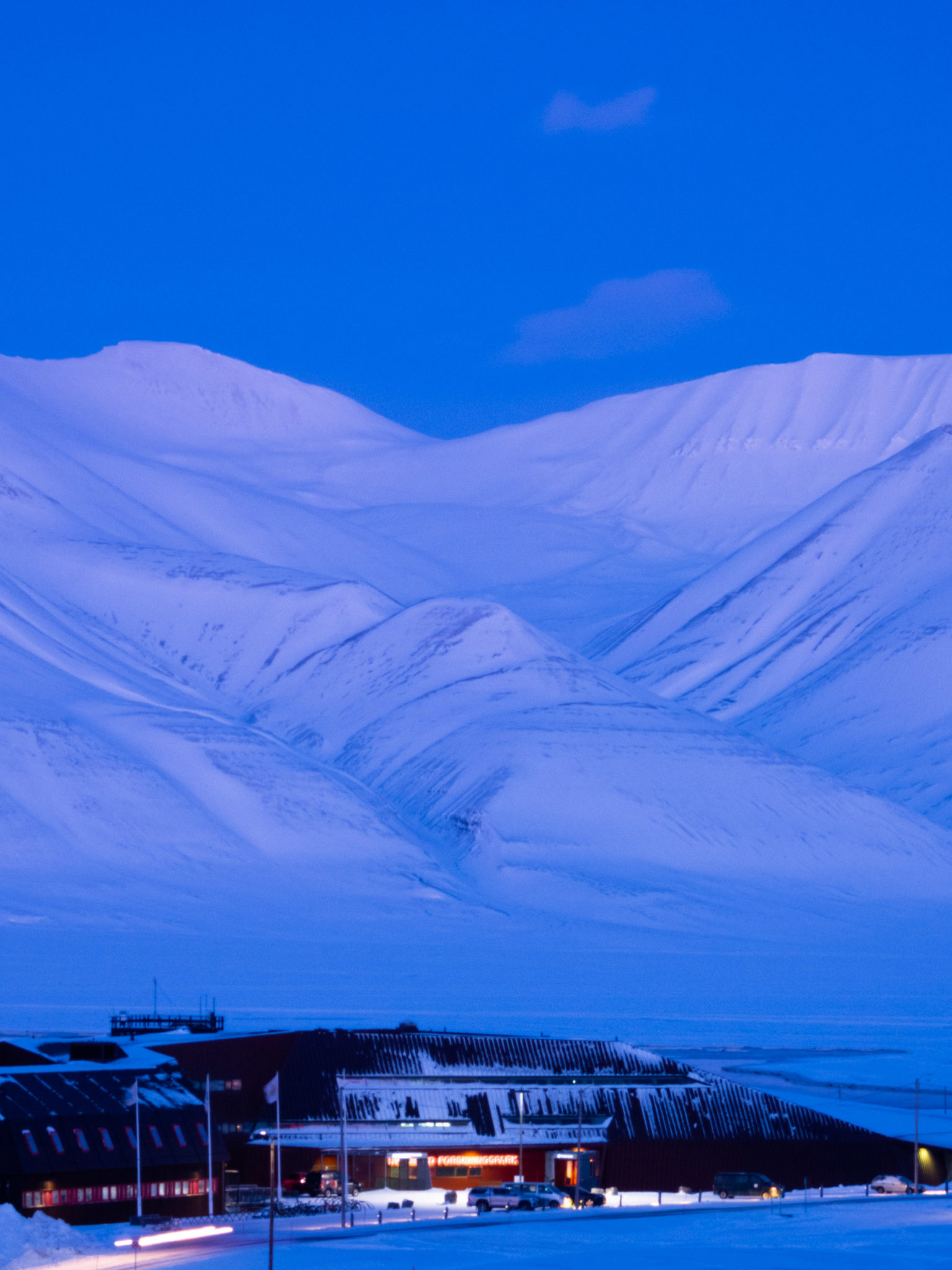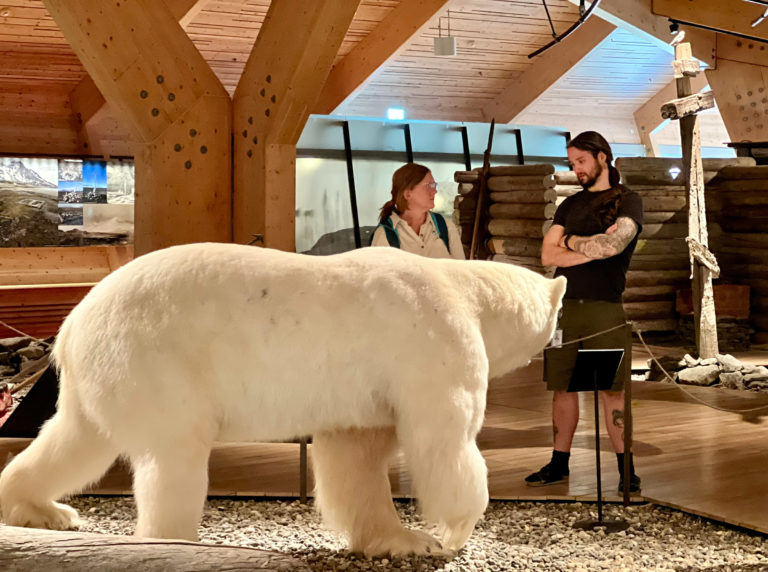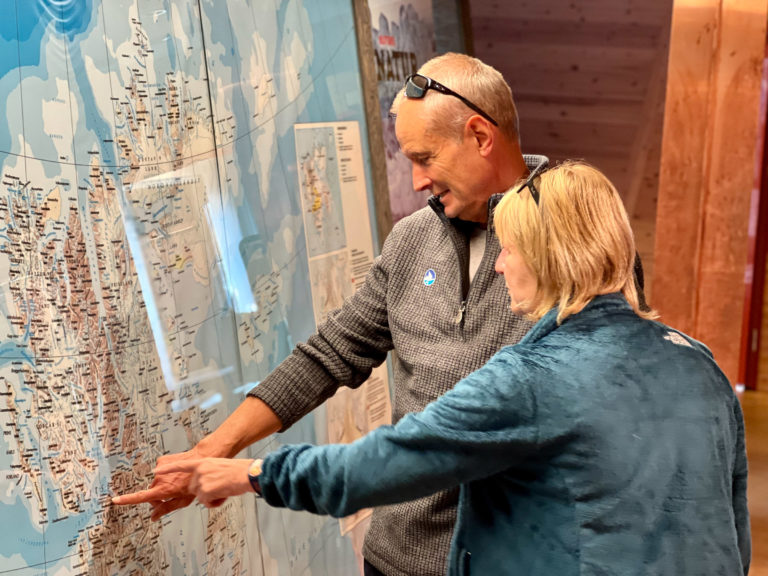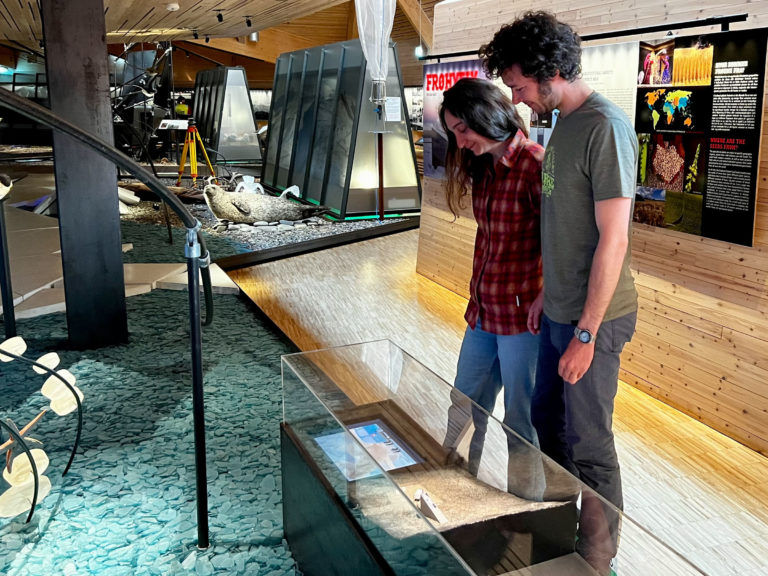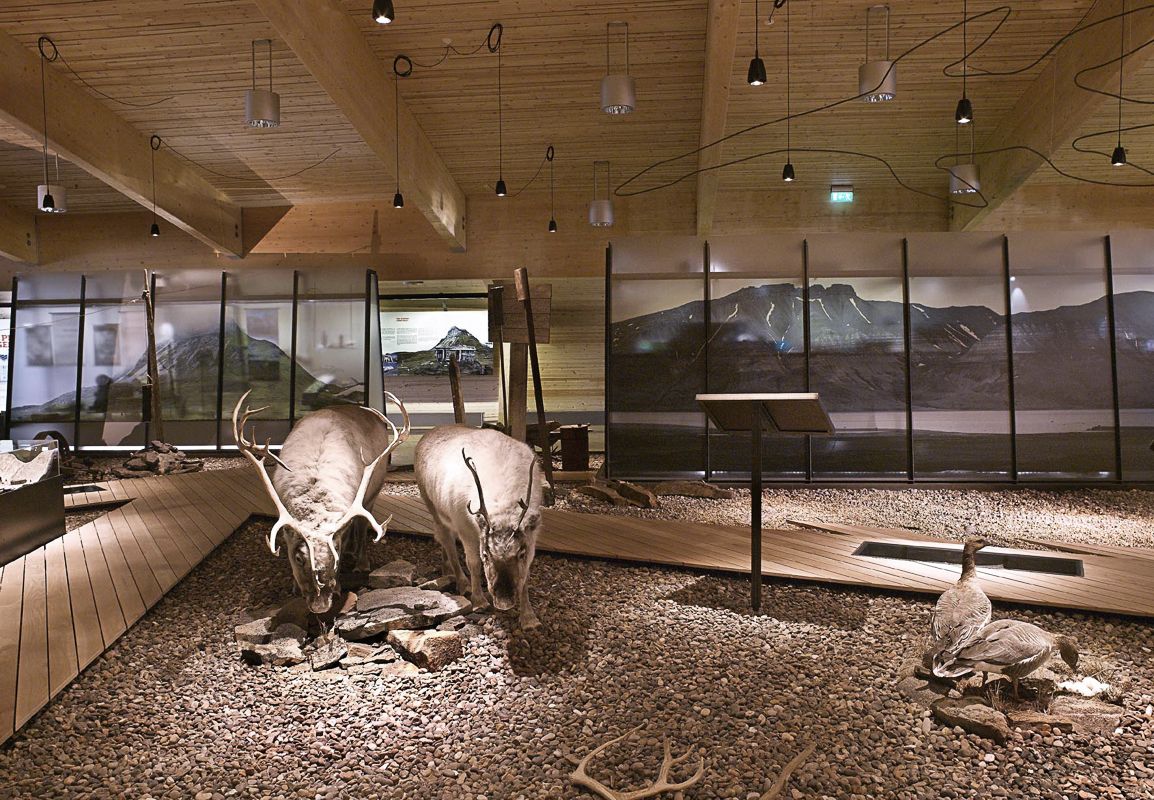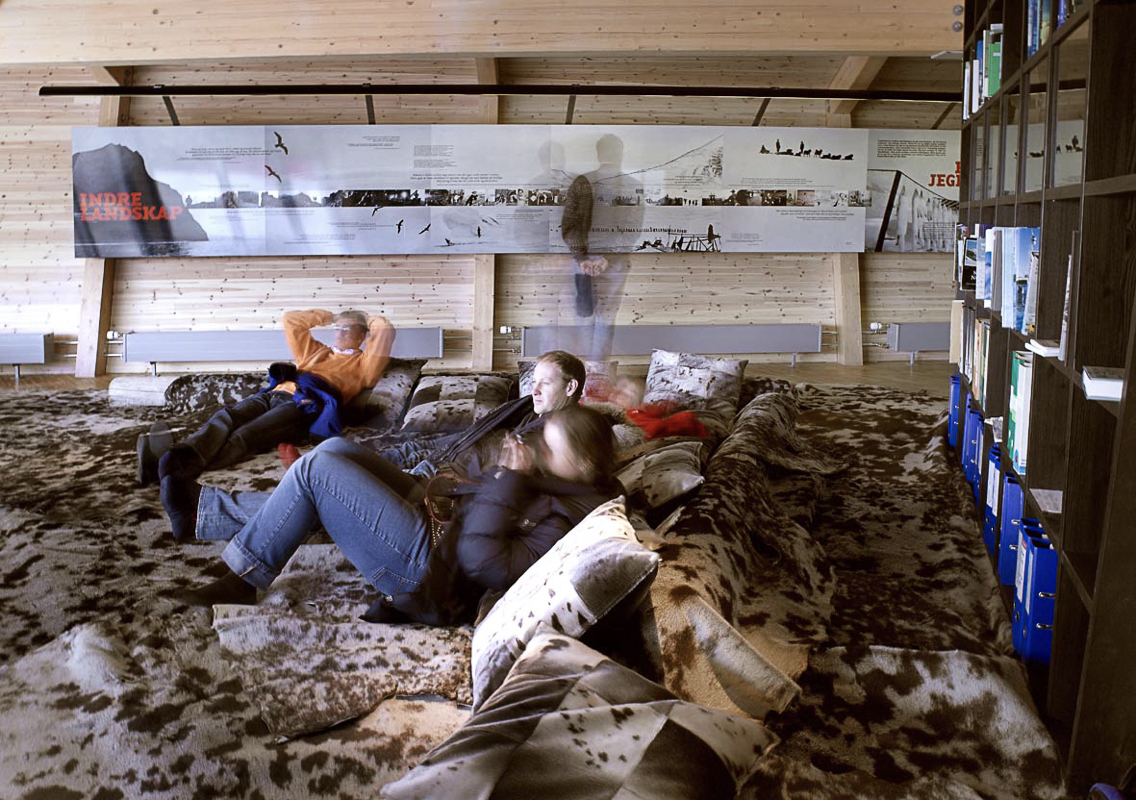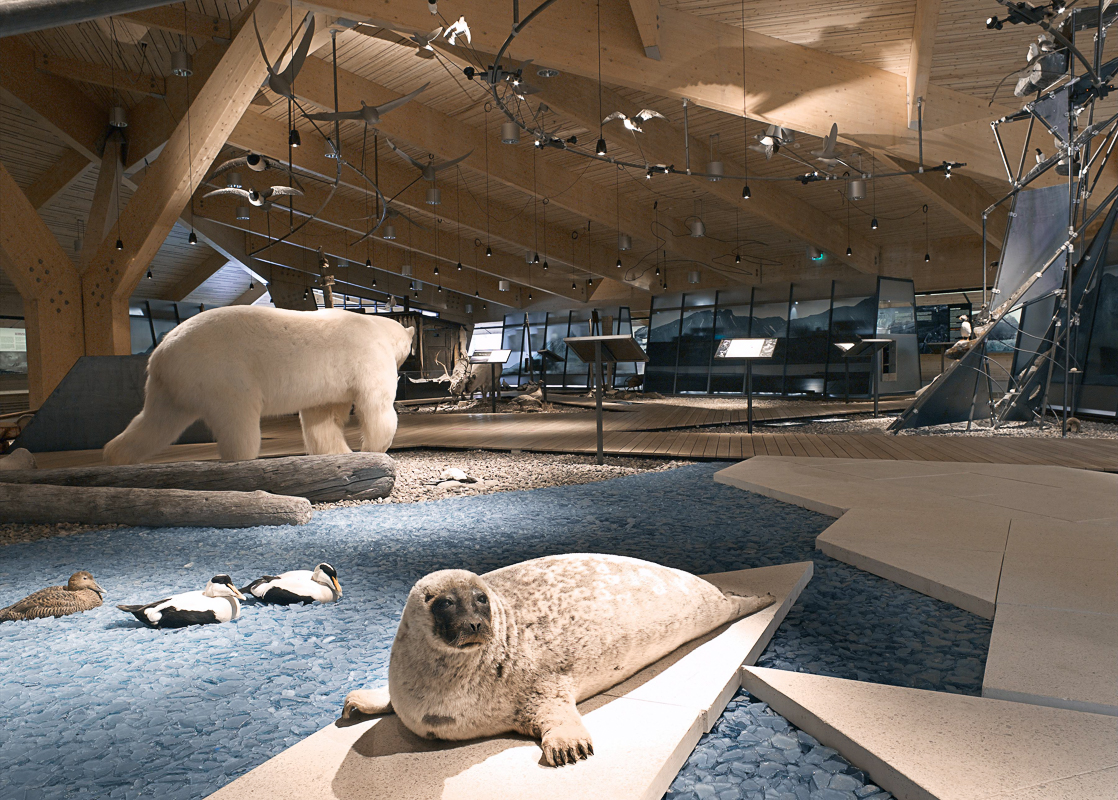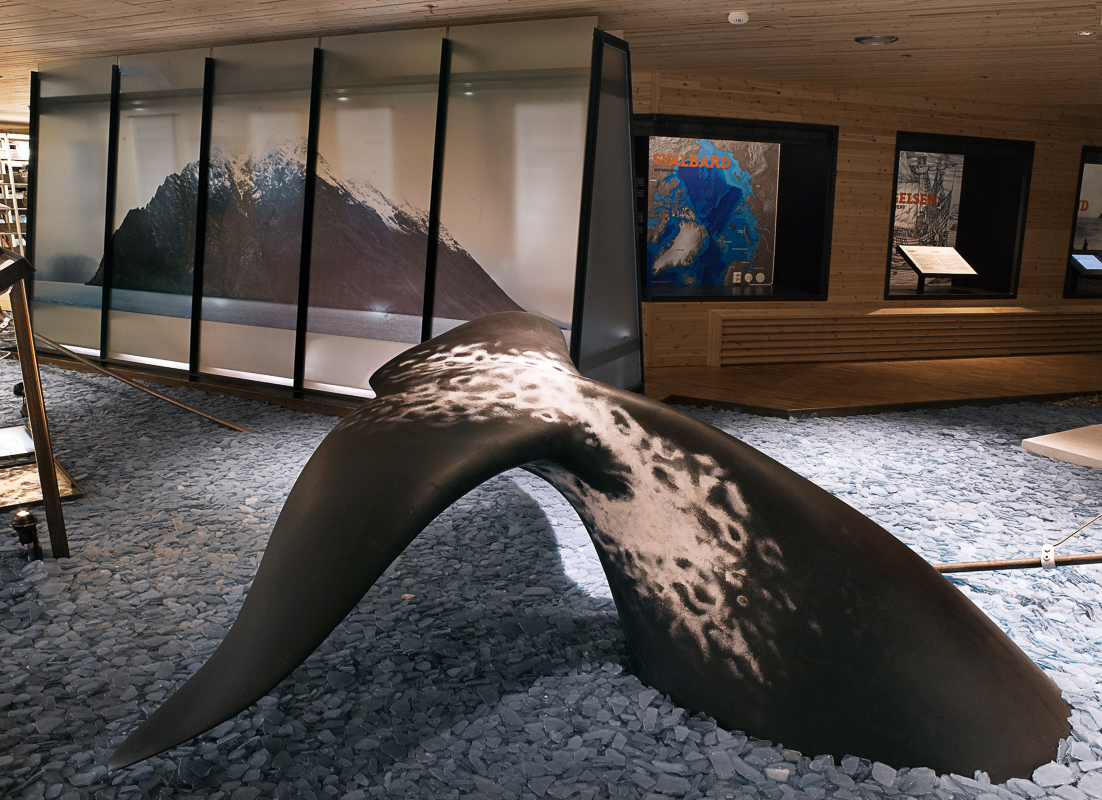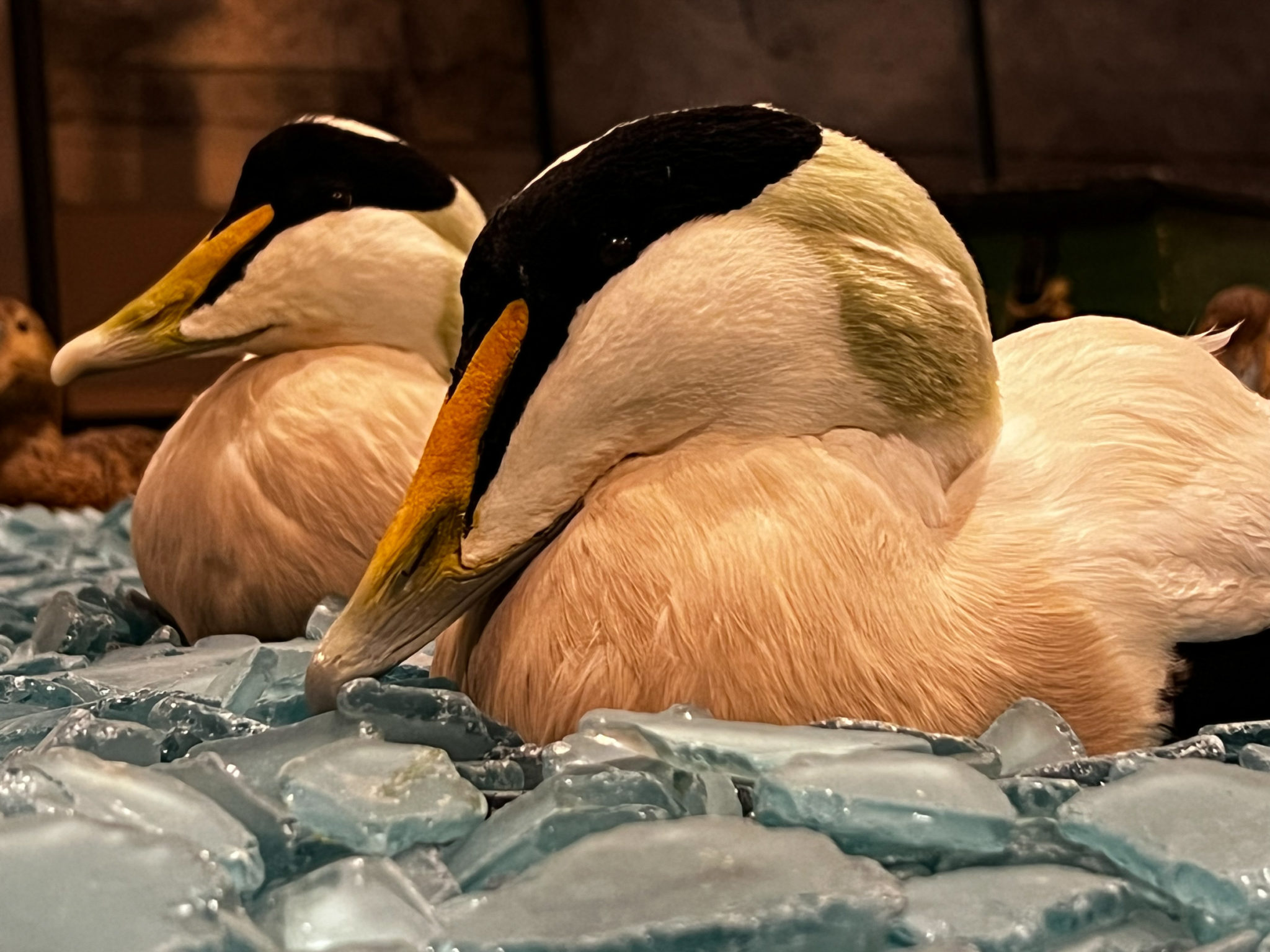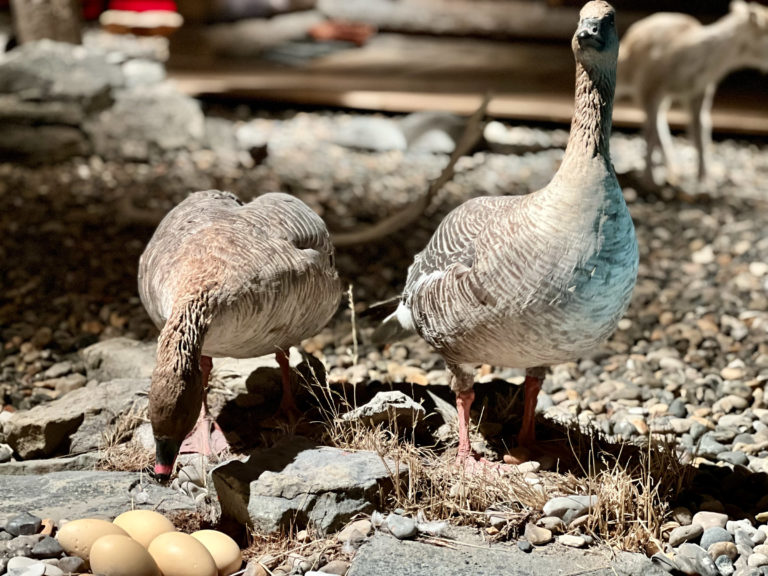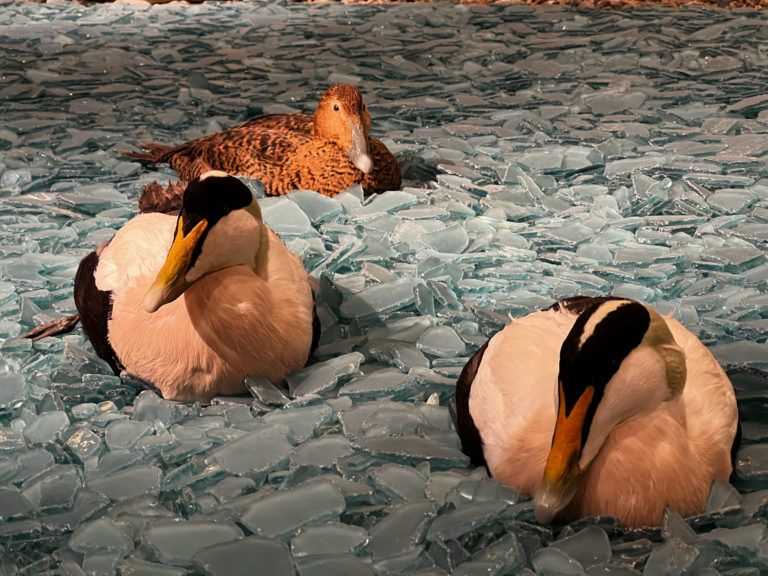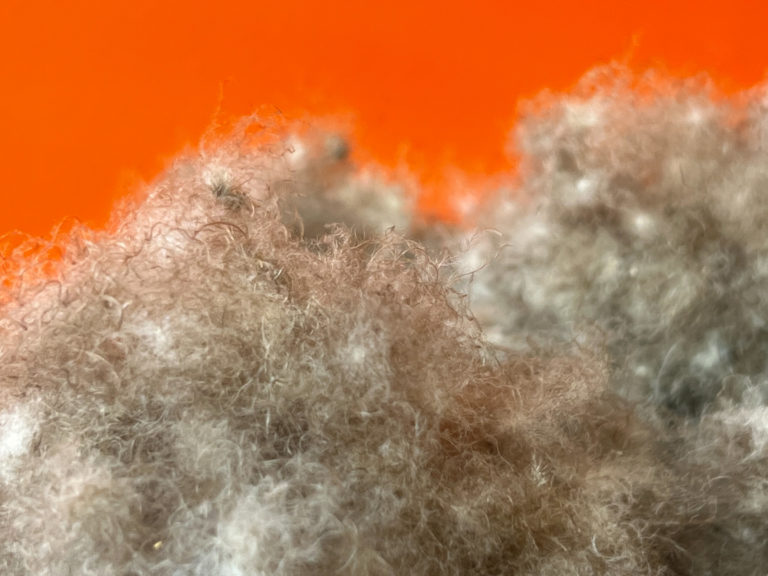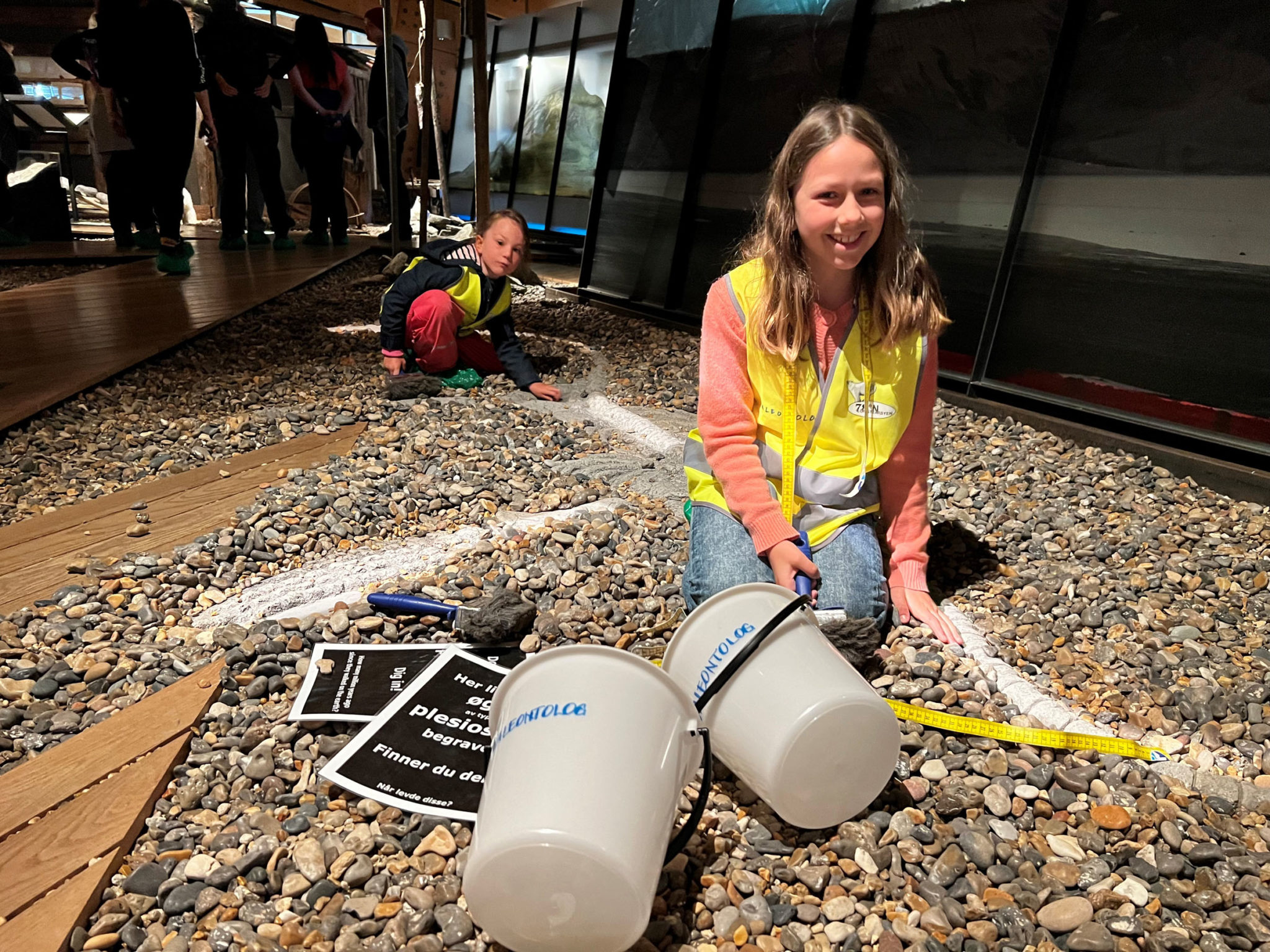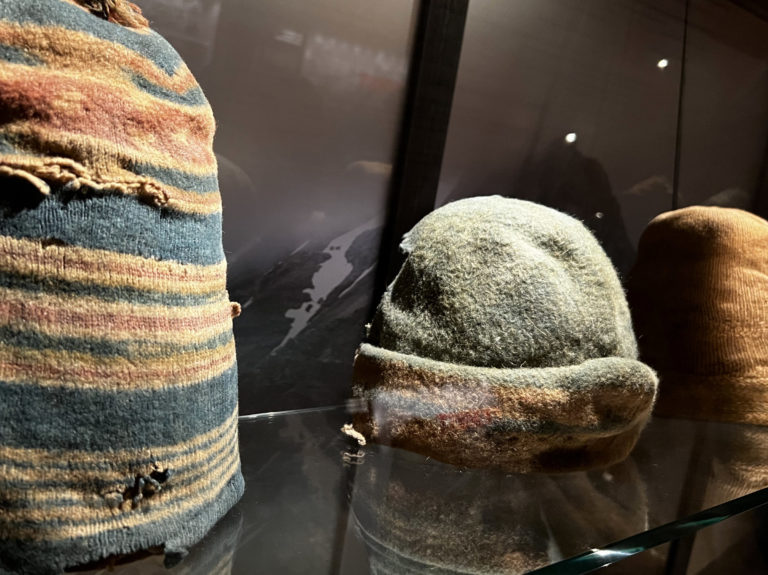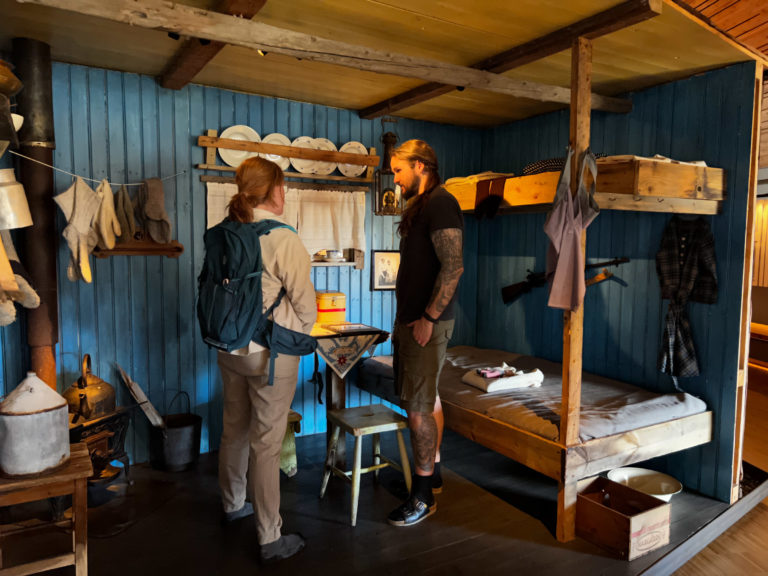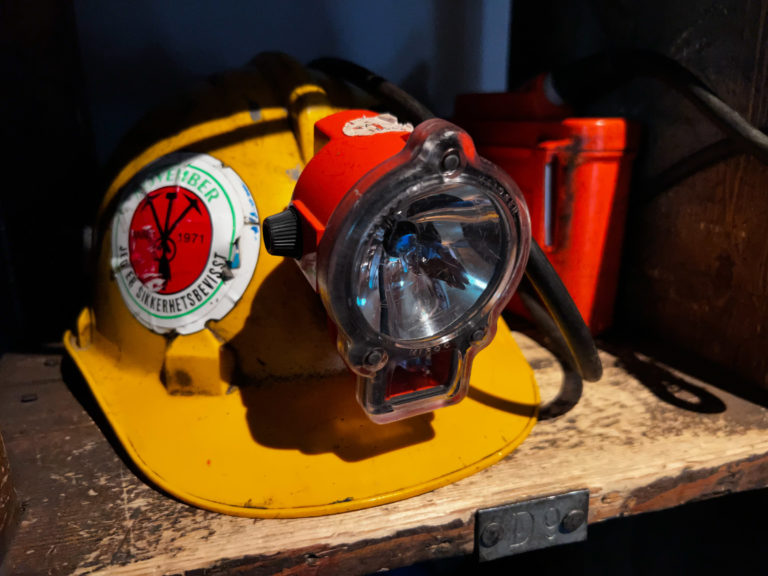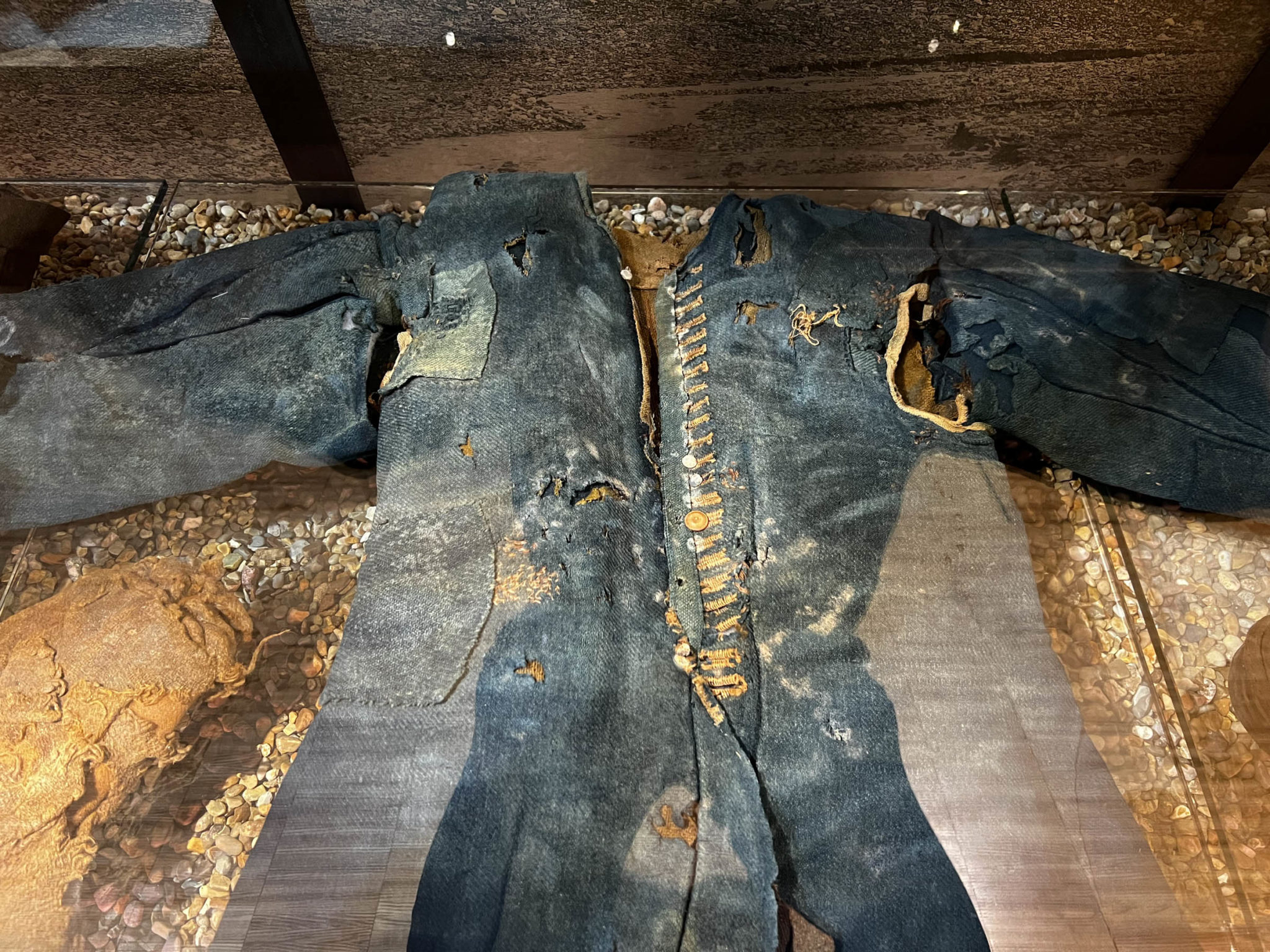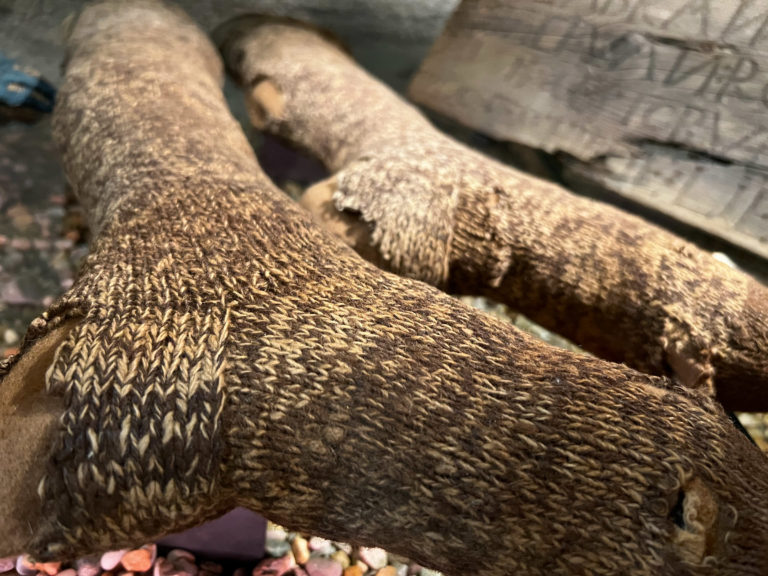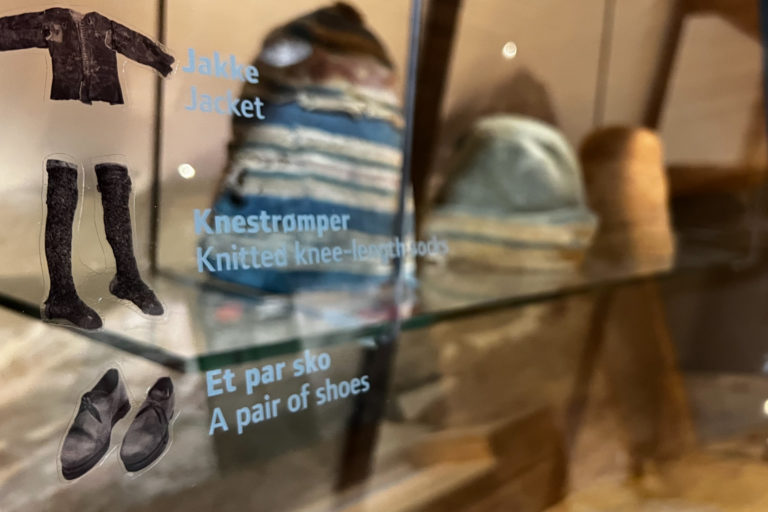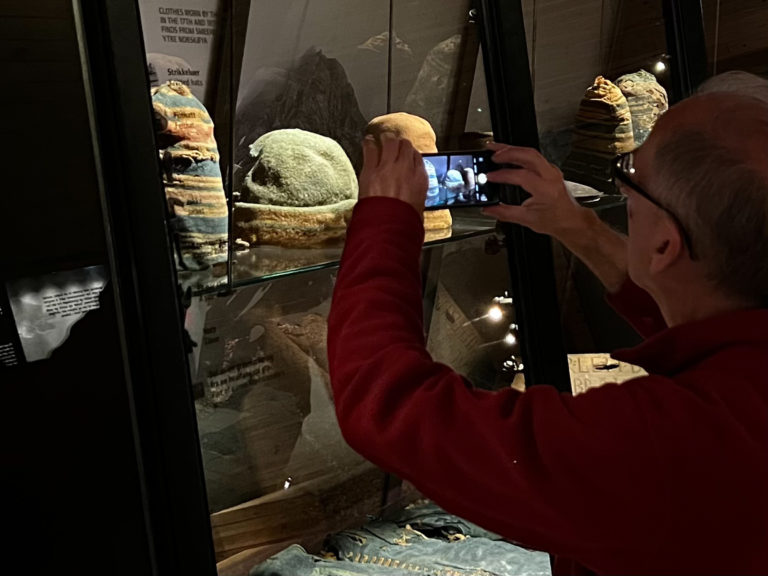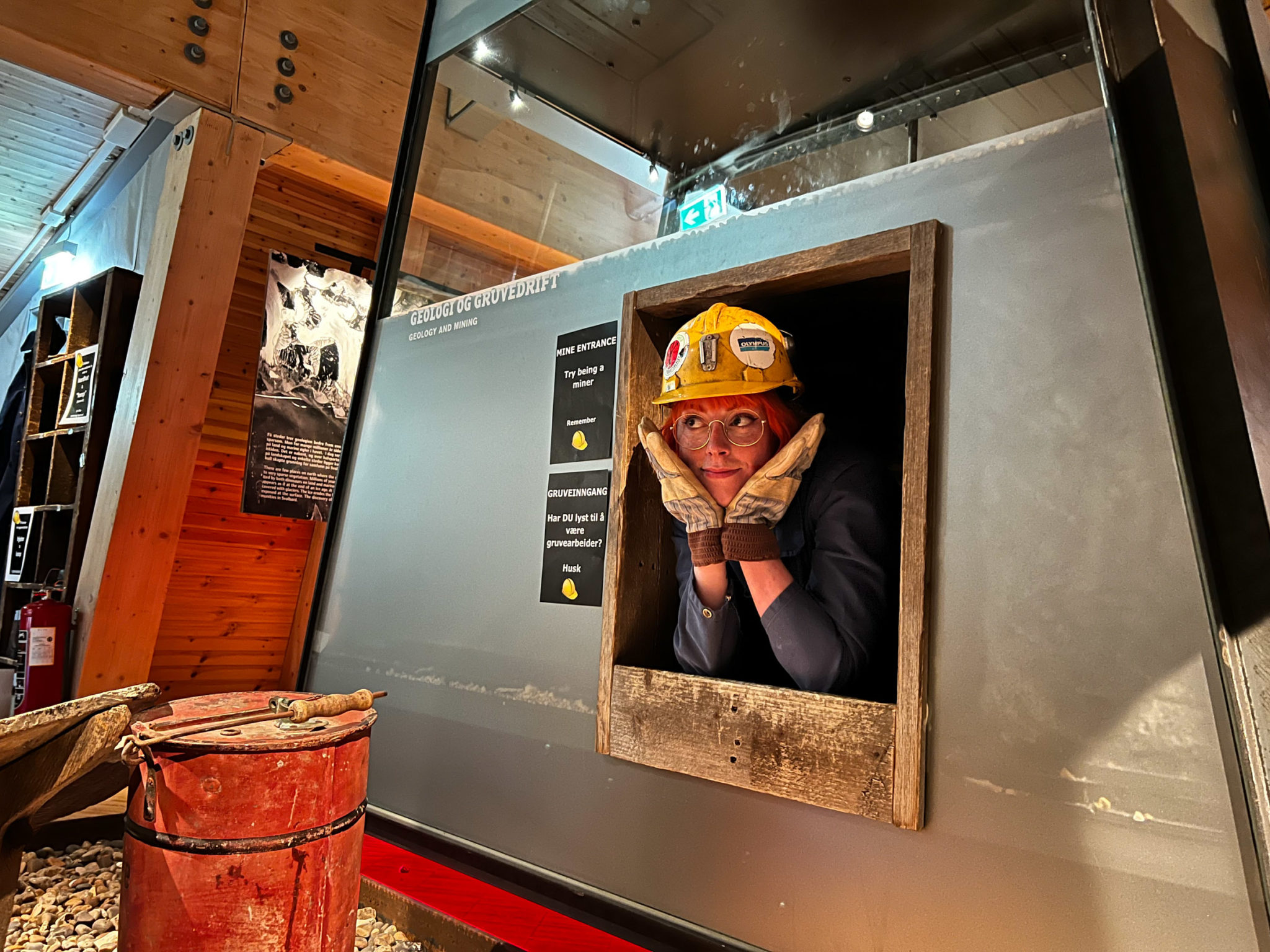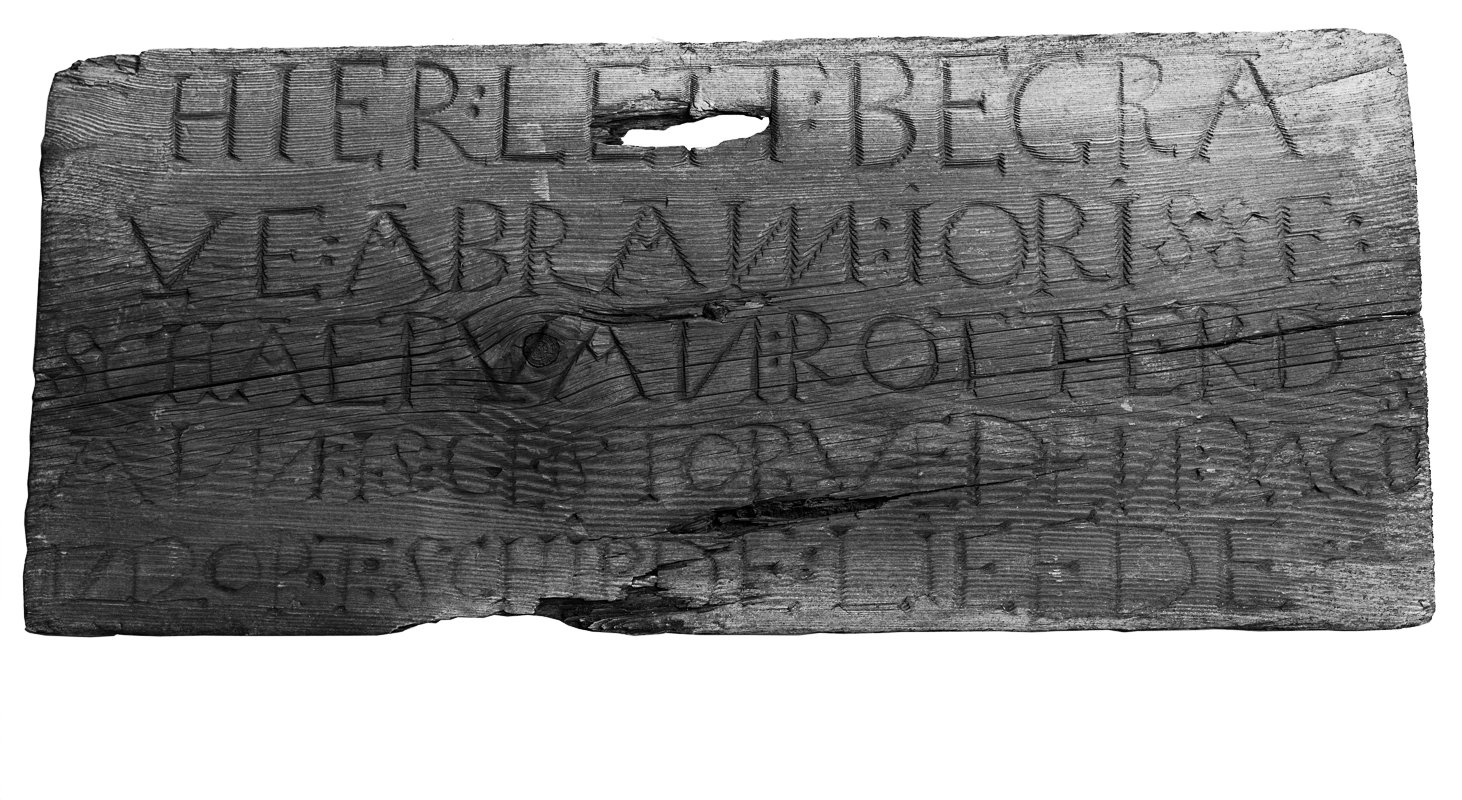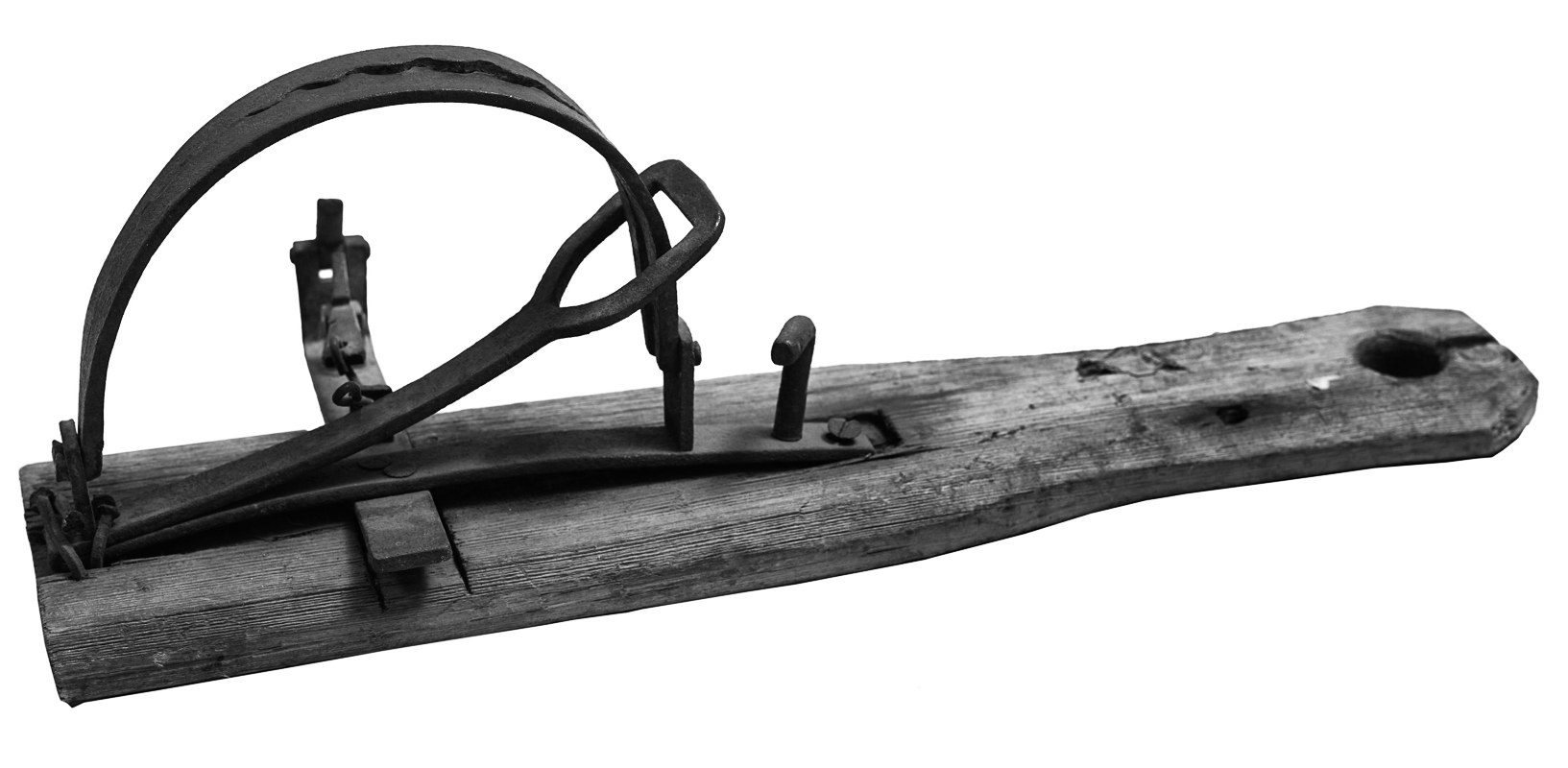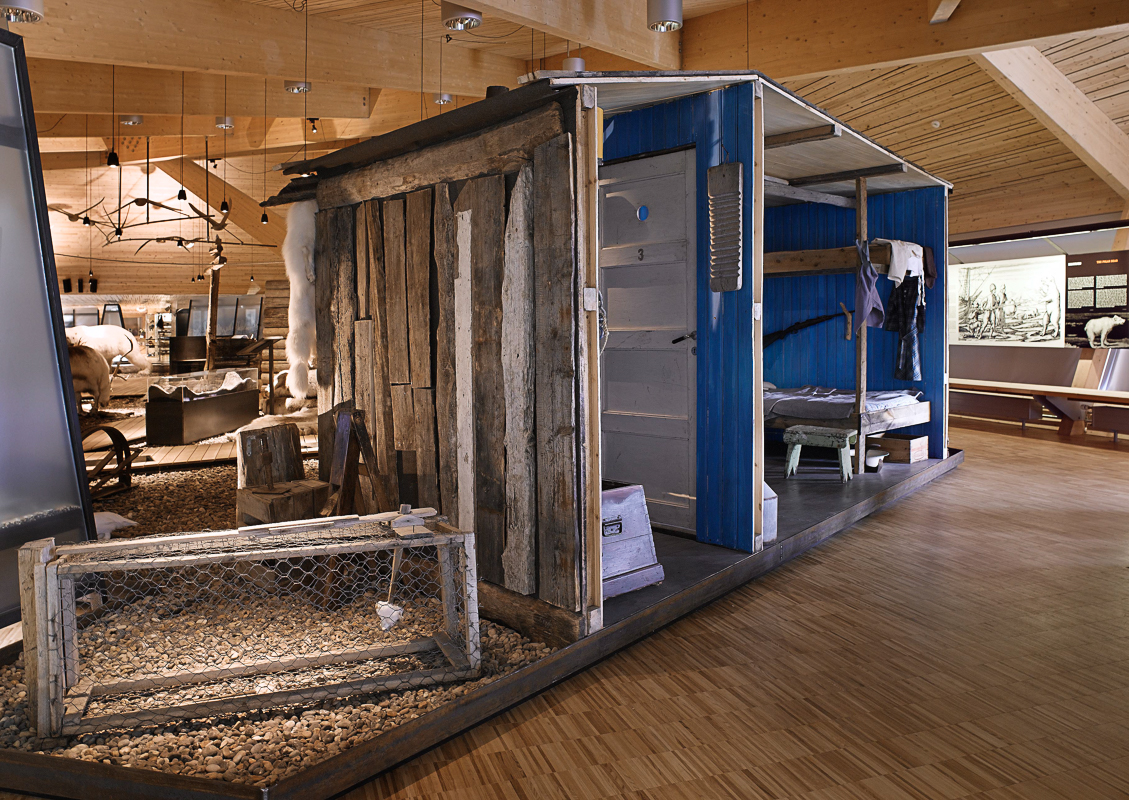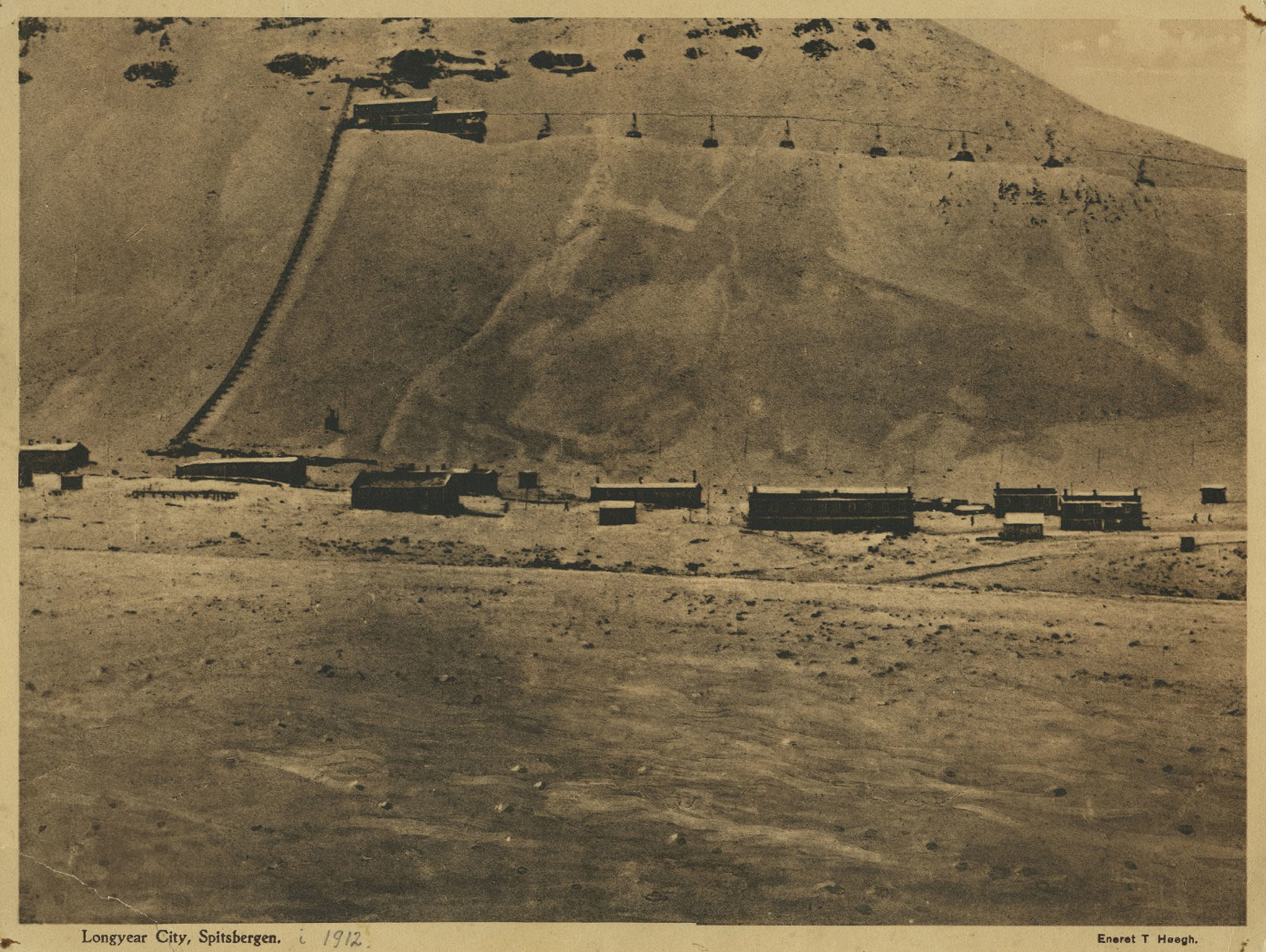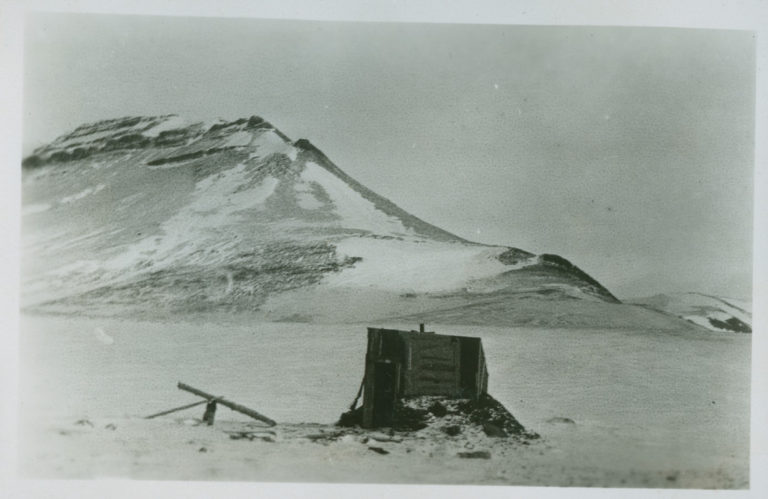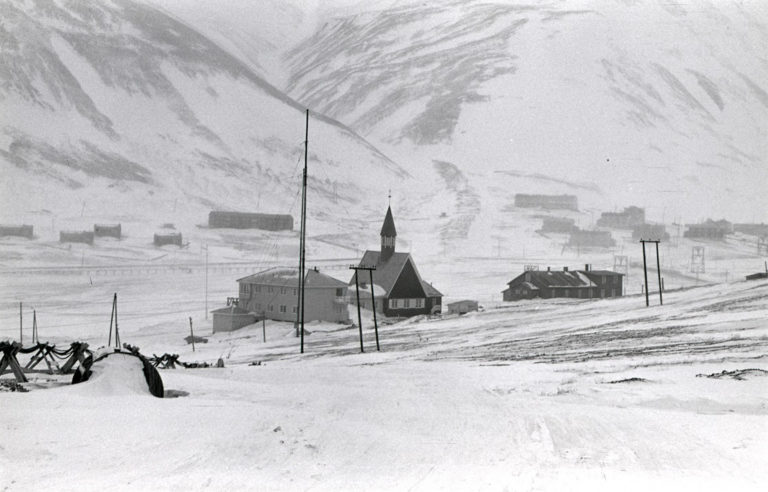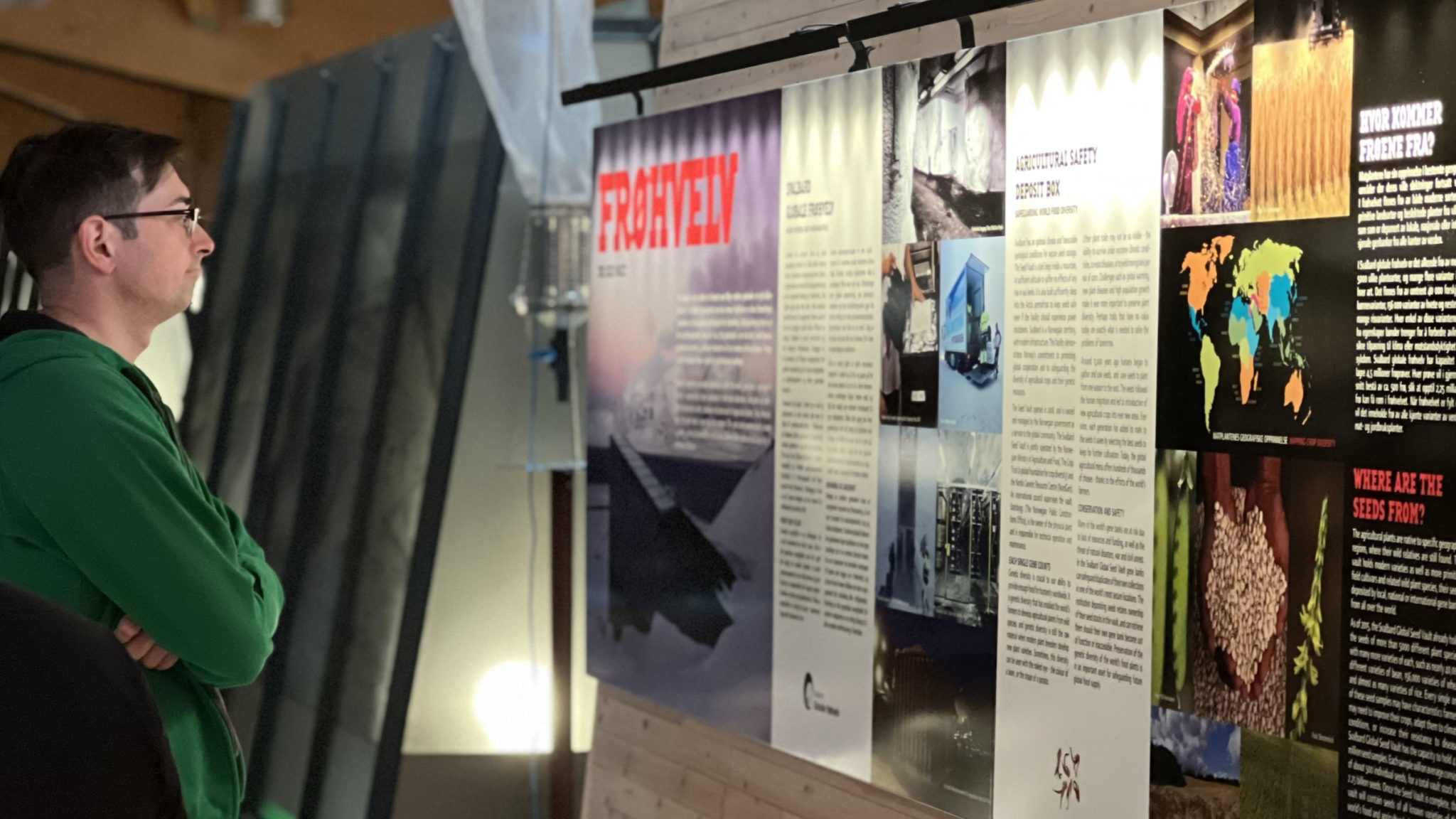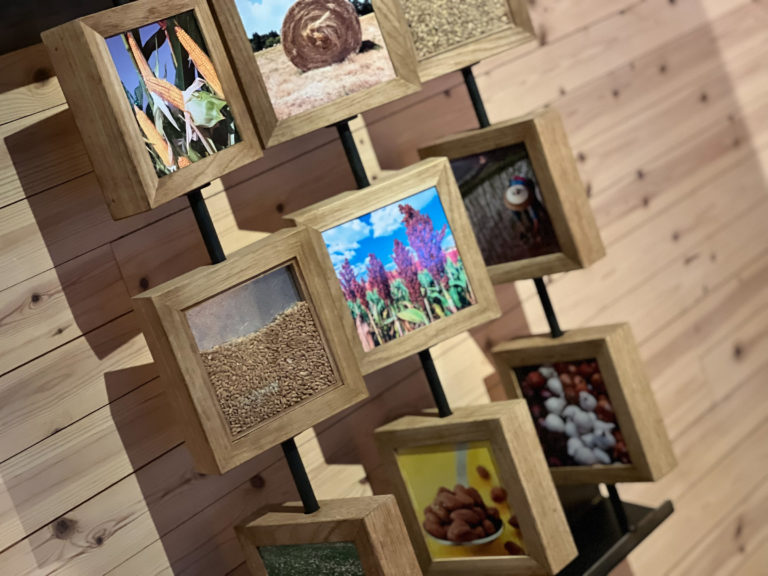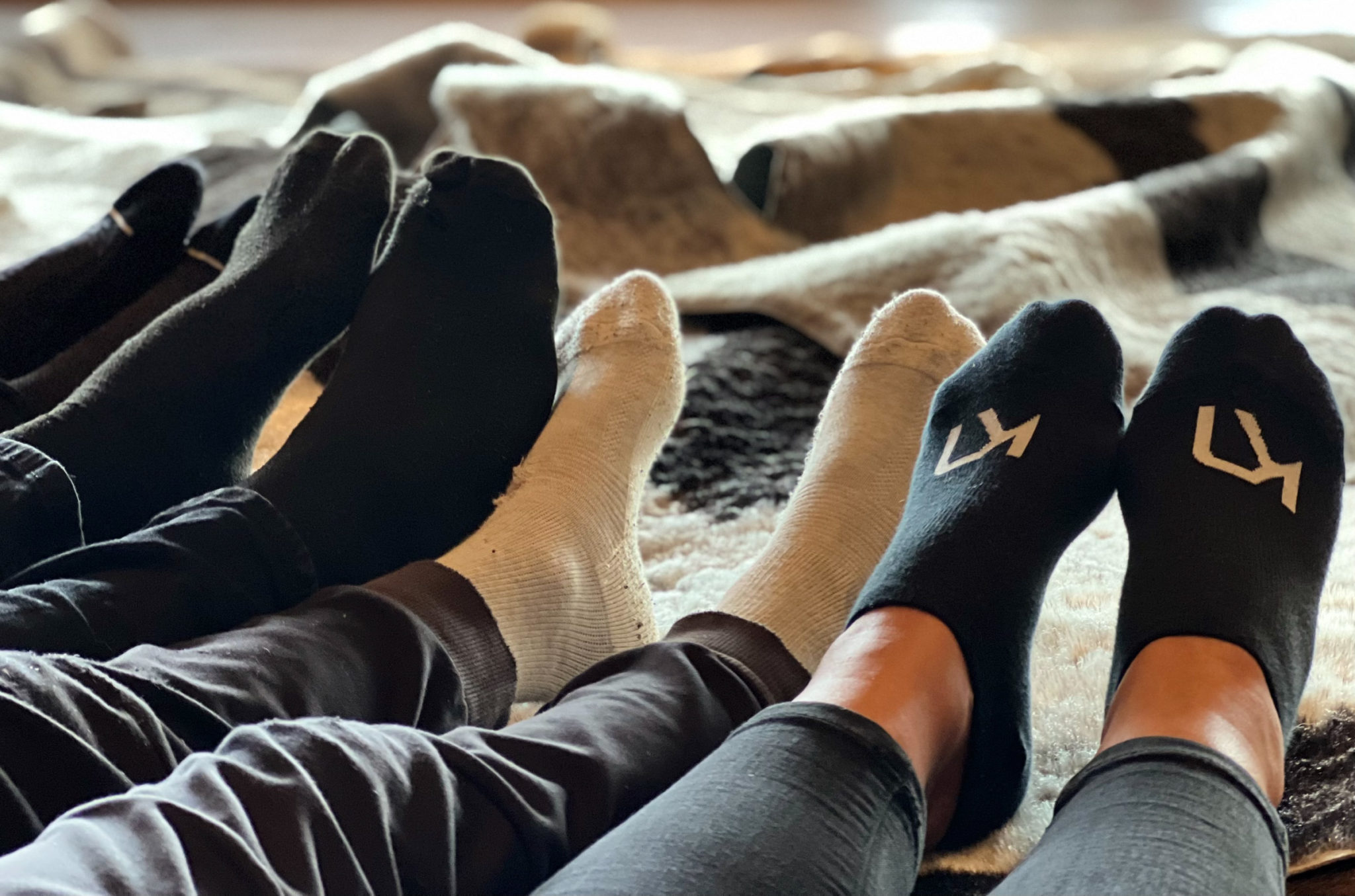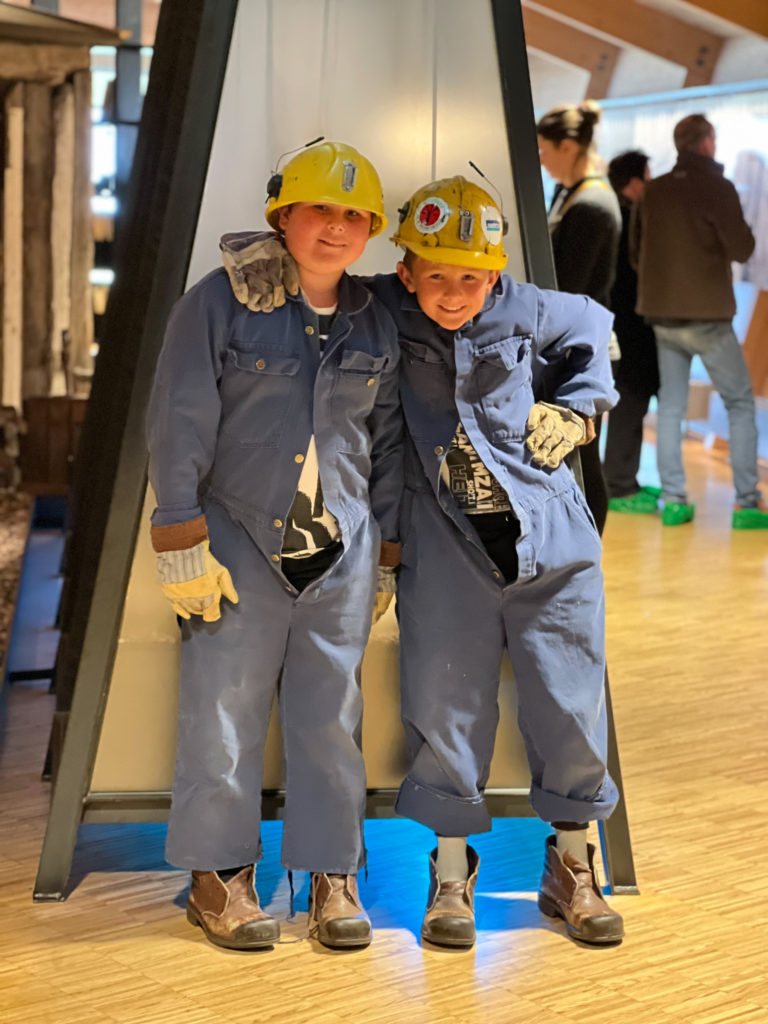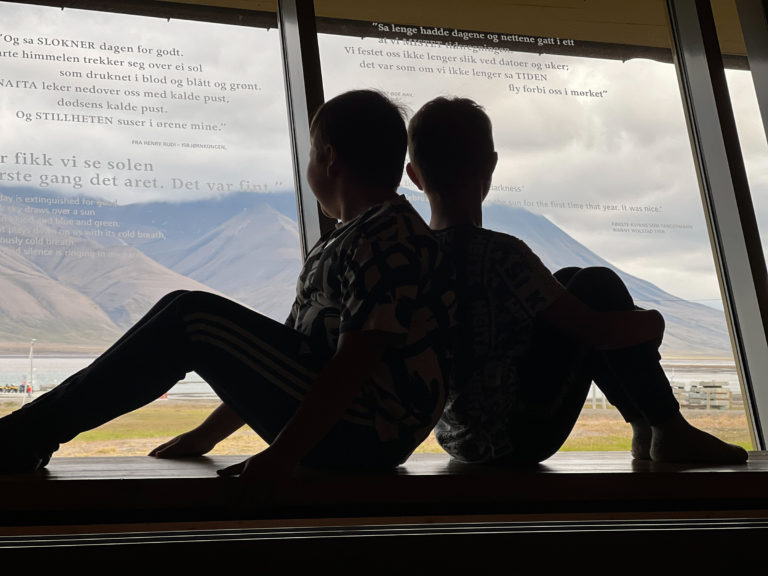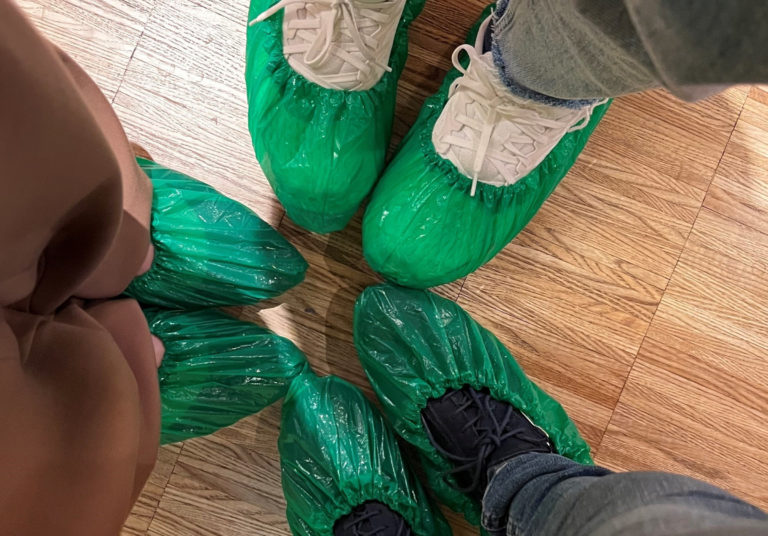Svalbard’s rich history and unique nature are the focus of the award-winning Svalbard Museum. Before you venture far and wide on Svalbard, this museum gives you an excellent insight, putting the wildlife, geology and people into context.
The Svalbard Museum is an excellent place to start your visit to Svalbard, regardless of whether you are planning a relaxing time in Longyearbyen or camping in a tent on the east coast. You will learn about the flora, fauna on the land and in the sea, voyages of discovery, whaling and coal mining. Surprisingly, the museum also covers the Age of Dinosaurs, European costumes and meteorology during the war. All of this has unexpected links to the archipelago near the North Pole.
The land is barren, but the sea is rich
Only a handful of species survive the entire year on land in the High Arctic. These include the Svalbard rock ptarmigan and the compact Svalbard reindeer. However, the sea is extremely productive with a rich supply of food where warm and cold ocean currents meet. Ringed seals, bearded seals, walruses and many species of whale feed on abundant fish and plankton, while around 3,000 polar bears hunt seals. The vegetation is only a few cm high, but species such as Svalbard poppies, various saxifrages and polar willow grow. Scurvygrass grows in the naturally fertilised areas below the bird cliffs.
Svalbard was once near the equator
The sparse vegetation means that it’s easy to pick out the different types of rock on Svalbard. The archipelago used to be much closer to the equator, which explains the large coal deposits from the Carboniferous period and the many fossils from the Jurassic period. The whole of Svalbard is a rich picking ground for fossils of plesiosaurs, pterosaurs, armoured prehistoric fish and other marine fossils from many different eras.
Ancient marine reptiles were found in Svalbard
In the summer of 2001, students from the University Centre in Svalbard (UNIS) found a series of bones of a swan lizard in Janusfjellet by Deltaneset. Three years later, researchers from the Natural History Museum, University of Oslo, started an excavation in this area. Within a small area, the researchers found the bones of two different marine reptiles: fish lizards and swan lizards. The swan lizard lived in Svalbard 150 million years ago. It was a marine lizard that swam in the sea and fed on fish and squid.
You can also dig for fossils
Today, children and playful adults can dig up a lizard skeleton in the museum’s exhibition. If you use a broom, you can reveal all the bones of this large animal. You can also measure it and learn more about what it ate and how it lived. The museum has a small “activity kit” for palaeontologists, comprising of a bucket, measuring tape, visibility vest and information, which they lend to visitors.
The bird life in Svalbard is for the tough ones
The exhibition covers several of the bird species in Svalbard, including the glaucous gull, pink-footed goose, little auk, puffin and common eider. The eider (Somateria mollisima) is a large diving duck. In Svalbard, the eider breeds in colonies on islands and in a more dispersed manner along the Spitsbergen coast. Several sub-species have been described. The Svalbard population belongs to the sub-species Somateria mollissima borealis, which also breeds in northeast Canada, Greenland, Iceland and Franz Josef Land in Russia. The eider can be spotted in several places in Longyearbyen, including the colony at Hundegården, which is abundant in spring and early summer. Pairing takes place in autumn or early winter. The nest is made in a flat, exposed area as a shallow scrape lined with plant material and a thick layer of down. Nests are often re-used for years.
Eiderdown provides the world’s finest duvets
Down from an eider is called eiderdown. The down is well suited as a duvet filling. It’s extremely light and gives off a lot of heat. Consequently, an eiderdown duvet has insulating properties like no other. In Norway, there are a few producers of these extremely exclusive products. Gathering eiderdown was often an important part of a trappers’ life in Svalbard. The wonderful down supplemented their income from trapping and hunting.
The Dutch wanted to go to China but came to Svalbard
At the end of the 16th century, the western European countries organised expeditions to find a quicker sea route to Asia. In 1596, a Dutch expedition led by Willem Barentsz came north in an attempt to sail north around Asia to China. The first thing they did was kill a polar bear beside an island, which they then named Bjørnøya, or Bear Island. They then sailed along a coastline of sharp peaks, or Spitsbergen in Dutch, observing the many whales and walruses. At Novaya Zemlya, further east, they became icebound and had to stay over winter, eventually managing to make their way to north-west Russia where they found people again. The expedition was a fiasco, but Svalbard and its rich natural resources were now on the map.
Klondike-like atmosphere at 79 degrees North
The first whale was killed in 1612, and that was the starting signal for a whaling rush on Svalbard. The bowhead whale was hunted with harpoons from small boats in the fjords along the west coast of Svalbard. The fat was then cut up and boiled in large onshore vats, a process involving several hundred men. In about 1650, however, the whales were hunted out of the region, and larger ships were now needed to hunt them further up towards the edge of the ice. Svalbard became a much quieter place, and by the end of the 18th century, the whales were almost extinct.
European costume history has been preserved in Svalbard
How did Europeans dress in the 17th century? You will find the answer at Svalbard Museum since few other places have such well-preserved clothes worn by ordinary Europeans in this era. Analyses of garments and material from discoveries made in northwest Spitsbergen provide a wealth of information. Silk from France, dyes from Africa and wool from Spain are among the evidence of a well-developed textile industry. If you visit Svalbard Museum, you can see garments recovered from the graves of whalers in Svalbard in the 17th and 18th centuries. The garments are surprisingly well preserved owing to the cold, dry climate.
Perhaps Willem Barentz’ hat is at the Svalbard Museum
The well-preserved finds exhibited at the museum include a jacket, hats, knitted socks and a pair of trousers. Svalbard Museum has created a digital collection of objects from European whaling in Svalbard in the 17th and 18th centuries. The clothing was mainly found in northwest Spitsbergen. Another fun and exciting clothing find may have been Willem Barentz’ hat. Willem Barentz discovered Svalbard in 1596 when he was searching for the Northeast Passage. The hat forms part of the Svalbard Museum exhibition.
The Russians wintered in the 18th century
In 1704, the Russians started setting up overwintering stations on Svalbard to use as bases from which to hunt and trap walruses and fur animals such as foxes, seals and polar bears. It was part of a co-ordinated Russian investment in the Nordic regions. The trappers’ stations were built from logs brought in from the White Sea, and were fairly large buildings with several rooms. Large Orthodox crosses served both as protection and as navigational markers. This Russian activity calmed down towards 1800, and stopped altogether after 1840.
Fur hunters wintered in huts in Svalbard
From the first half of the 20th century, trappers, mostly from Northern Norway, overwintered on Svalbard in simple trappers’ cabins. They hunted fur animals such as Arctic foxes, polar bears and seals, gathered down from the Eider ducks, and shot birds and reindeer for fresh meat. Altogether, more than 1000 people overwintered during this period, mostly before 1940. The trappers were probably attracted less by a thirst for adventure than by the money they could earn here.
Were there only male trappers?
No! Adventurous women also went on hunting/trapping expeditions in the Arctic. Some women also went hunting/trapping with their husbands. The heyday for overwintering was from the late 1890s until 1941. Almost 400 people operated as hunters and trappers during this period, of which 6% were women. This amounted to well over 1,000 winterings. You can learn more about the history of hunting/trapping at Svalbard Museum, where you can also see a replica of a trapper’s hut where Hansine Hansen wintered with her husband and son – and gave birth to a child.
Wanny Woldstad was a woman who became a trapper
Wanny Woldstad is a pioneer among the female trappers. She was the first female hunter/trapper in Svalbard. “She was an oddity in a field that was the exclusive domain of men since the Stone Age,” wrote Helge Ingstad in the foreword to Wanny Woldstad’s book. In a book about Svalbard published in 1989, Marit Anne Hauan says: “One winter she baked 900 loaves of bread in addition to cakes. She was responsible for washing clothes, keeping the hut clean, mending and patching. She also played an active role in the hunting and trapping work.” From the Polar Museum’s exhibition, we can read: “There is one woman who stands out, namely Wanny Woldstad. As an equal trapping partner, she has left her mark on Svalbard more than any other woman.”
Christiane left Germany for the Polar Night in Svalbard
Christiane Ritter is another woman worth noting. She travelled from Germany to Gråhuken in Svalbard in 1934 to spend a year with her husband in the far north of Svalbard. The transition from Central Europe to the Arctic was huge, which is well described in her book A Woman in the Polar Night. You will find this book and a lot of other polar literature in the museum shop. You can also read about Sally in Sallyhamna[GT1] (Norwegian only…google translate?=
Coal mining started around 1900
Svalbard’s coal deposits were discovered just before 1900, and people from many countries eagerly staked their claims. Places like Svea, Pyramiden, Grumantbyen, Barentsburg and Longyearbyen were a hive of activity. The Norwegians and Russians (Soviets) have mined here for the longest continuous periods, but there were also times when the Swedes, Americans and Dutch were heavily involved. The mining communities worked all year round — and from November to June, they and their hundreds of workers were cut off from the mainland.
The war in Svalbard was a war about the weather
Svalbard has its own war history. Although the archipelago was never occupied, from 1941 the Germans had several automated and manned weather stations in Svalbard. The purpose of these was to obtain all types of weather information that the German war administration considered important for warfare in Europe. The history, location and cultural monuments that remain from these weather stations show how the war in Svalbard was about weather and a battle for information that was of great importance in Europe.
The seed vault is humanity’s backup plan
The Svalbard Global Seed Vault is a gene bank deep inside the mountain. This is the largest reserve storage location in the world for many of the world’s gene banks. All gene banks have a duplicate copy of their seed collections stored here. This ensures that food plants and other useful plants are preserved so they are not eradicated by disasters such as storms, war and terrorism. Although the seed vault is not open to visitors, you can view it from the outside.
Svalbard Museum takes you on a journey into history and nature
Svalbard Museum is a modern museum that explains things in a vivid manner. The many original objects are supported by models and recreated environments to enable visitors to get closer to history, flora and fauna. In this way, children become enthusiastic while adults learn and are entertained. It’s only a short way to even more knowledge as you are welcome to visit the museum’s digital collections, photo archive and history archive. The museum is located at the Svalbard Science Centre and is open year-round. It’s co-located with the University Centre in Svalbard (UNIS) and the Norwegian Polar Institute.
Practical about the Svalbard Museum
The Museum is found in the same building as UNIS, the University Centre at Svalbard, in central Longyearbyen. It is easily reached on foot from almost everywhere in Longbyearbyen.
The museum is open every day 10am-5pm, all year. Exceptions include the 1st and 2nd of January, May 17th and the Christmas holiday. Double-check with their website.
Svalbard museum practices shoes-off – as many places in Longyearbyen do. This is a tradition that came about because of coal dust and dirt from mining. It was about avoiding dragging all this into the houses. Even today, although most mining has ceased, this is a practical tradition. At the museum, you can take off your shoes in the cloakroom, or borrow shoe covers over your own shoes. At the Svalbard museum, they call their shoe covers “sugar shoes”. That’s because they’re made from polyethylene, which is made from sugar cane-based material. They have the same properties as regular polyethylene and are 100% recyclable and made mainly from renewable raw materials. This is an environmental choice that contributes to reduced carbon dioxide emissions.
Some people go for a quick tour through the exhibits. Others like to spend more time. For the latter, these links might be of interest:
The Object Collections – overview of every object in the museum
The Photo Collections – 20 000 digitalised photos
The Historical Archive – Collection of archive documents
